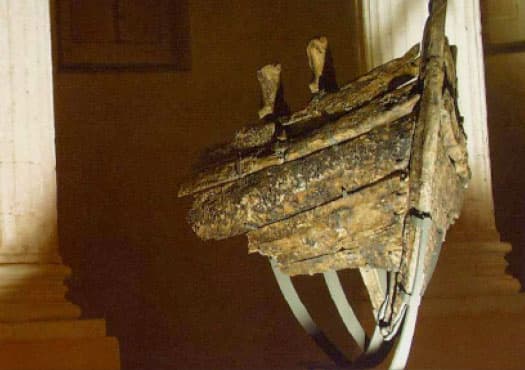
Treating and curing
Preserving the vestiges of the past
CONSERVING AND CONSOLIDATING
The collections of heritage metals cover uses as diverse as architecture (lead, zinc or copper roofs, iron or steel reinforcement bars in buildings), tools used for production activities or in day-to-day living (hammers, ploughshares, axes, knives, etc.) or cultural objects (musical instruments, jewellery, etc.). Preservation is thus all the more important for the less noble metals, such as iron and copper alloys, or lead, which are particularly vulnerable to alteration. This alteration, specifically called corrosion in the case of metals, is all the physical-chemical processes of oxidation occurring in the presence of chemical species in the environments in which the metals spend time over their history (water, atmospheric gas, mineral salts, etc.). Layers of corrosion products then form and their properties also have an influence on the conservation of the objects. They also contain information about the original surface and thus the initial shape of the object, which also needs to be conserved. NIMBE/LAPA [1]NIMBE (Nanosciences and Innovation for Materials, Biomedicine and Energy) is a CEA/CNRS joint research unit (UMR 3685), specialising in the design, working and analysis of materials at micron to nanometre scales, as well as the understanding of physical-chemical mechanisms and their synergies at these scales. It is assisted by various laboratories, including the Archaeomaterials and Alteration Prediction Laboratory (LAPA) has thus developed specific expertise in analysing and understanding the physical-chemical processes at play in these heritage metal preservation contexts, in order to develop innovative treatments in this field. The methodology used is based on the use of sophisticated complementary analysis techniques giving an understanding of the morphology, chemical composition and crystalline structure of the corrosion products, at scales appropriate to the heterogeneity of these materials, that is from the millimetre to the micron.
Metal elements can reach us either after having been abandoned for up to a thousand years, or may still be in use. Their preservation therefore takes account of the succession of environments with which they have been faced. For example, an archaeological object taken from a shipwreck will have corroded for several centuries in a marine environment and then, following the excavation, will have been suddenly exposed to the oxygen in air. This change in environmental conditions can lead to a sudden acceleration of the corrosion processes and the rapid loss of the object if not treated. This phenomenon is linked to the presence of chlorinated crystalline phases which react little while immersed in a marine environment but which will suddenly dissolve when the objects are placed in the presence of humidity and atmospheric oxygen. Stabilisation is then required (in a sodium hydroxide bath for example), as soon as possible after the excavation, in order to eliminate these phases which can imperil the preservation of the object.
Therefore, to understand the processes at play when stabilising ferrous artefacts, analyses were carried out in the laboratory and under synchrotron radiation using an in-situ measurement unit. The aim was to reveal the steps in the chemical transformation of the corrosion products when an object corroded in a marine environment is immersed in a sodium hydroxide solution (NaOH). A section of corrosion products was thus sampled from an iron bar taken from a Roman shipwreck off the coast of Saintes-Maries-de-la-Mer. The sodium hydroxide solution circulates over the outer surface of the corrosion products and gradually diffuses into the interior of the layer several millimetres thick. Thanks to analyses of a transverse cross-section, the in-situ transformation of the corrosion products was revealed as a function of time. A major experiment in this study showed that a deaerated sodium environment is far more effective in removing the phases containing chlorine than an aerated environment.
In other cases, the corrosion processes are harmful over the longer term. For example, outdoor statues (such as Rodin’s bronzes) corrode slowly in atmospheric conditions. However, this process gradually consumes the metal, blurring the outlines of the work. Regular restoration operations are needed, to apply hydrophobic protective treatments based on organic compounds. These treatments are derived from the application of industrial protocols which take account of neither the presence of the layer of corrosion products, nor the effect of the interaction between the mineral layer and the protective organic compound, which limits the effectiveness of these treatments over time. In the specific case of heritage objects, account must be taken of this layer and its interaction with the organic compound used. Therefore, in order to optimise these treatments for heritage artefacts and develop the use of non-toxic compounds, studies have been carried out on the protective effects of organic compounds (family of carboxylic acids) on copper objects corroded over the course of a century. Thanks to isotopic markers simulating the penetration of atmospheric water (heavy water), applying this type of compound by immersion proved to be far more effective on protecting these ancient samples against corrosion. The physical-chemical analysis methods thus demonstrated all the benefits of better understanding the phenomena at play on chemical systems applied to metal artefacts. n
Glossary
Heavy water: also called deuterium oxide, comprises the same chemical elements as ordinary water (H2O) but its hydrogen atoms are heavy isotopes (deuterium).
 More (3 min.)
More (3 min.)

Treating and curing

Conserving and consolidating

Analysis and restoration